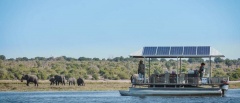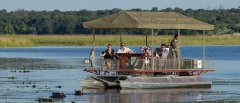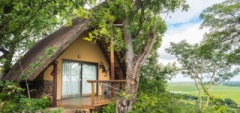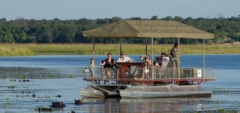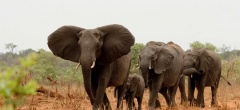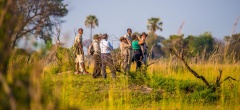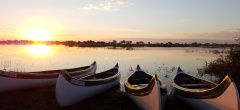Chobe National Park
An abundance of wildelife, in particular elephant!
An area of around 11,000 square kilometres, the Chobe National Park stretches from the dry sand of the northern Kalahari to the fertile floodplains of the mighty Chobe River which forms its natural (and Botswana’s) border to the north and after which the park is named. Arguably the second most famous area of Botswana to head to for a safari, the Chobe National Park offers big game viewing in its purest sense with vast herds of buffalo and elephant (along with vast prides of lion) roaming through the diverse topographies.
For most, however, a visit to Chobe National Park will, more than likely, be to one of the river front properties that stretch west along the river from Kasane, Botswana’s north easterly most town. This area is deemed by many to be overcrowded with properties and large double decker boats that ply along the river during the day and in the evening as the myriad elephant come down to the water to play and refresh.
To consider the park as just this region in the north is, certainly, to miss the point somewhat. While it is true that the park becomes very arid during the dry season months, from June to November, hence the condensing of game to the river, the region around the Savuti Channel, the Savuti marsh and south to the Mababe Depression offers excellent game viewing both early in the year and again towards the end of the dry season.
Topography
The park is, in the most part, made up of Kalahari sandveld that are dotted with pans that fill in the wetter months of the year and provide sustenance for the large animal populations outside of the dray season. Along the water front the normal riparian forests dominate where, to the south, Mopane woodlands start to dominate the environment. The only difference is to the west where the Savuti Channel once flowed and where it is still possible to see the remains of acacias and open grasslands which have become a known destination for the famous migrating zebra of Botswana.
With a series of larger and smaller permanent camps and, in more recent times, mobile tented operators in and just outside the park, it is possible to consider the Chobe National Park as a great destination to spend a minimum of a few nights in our opinion.

